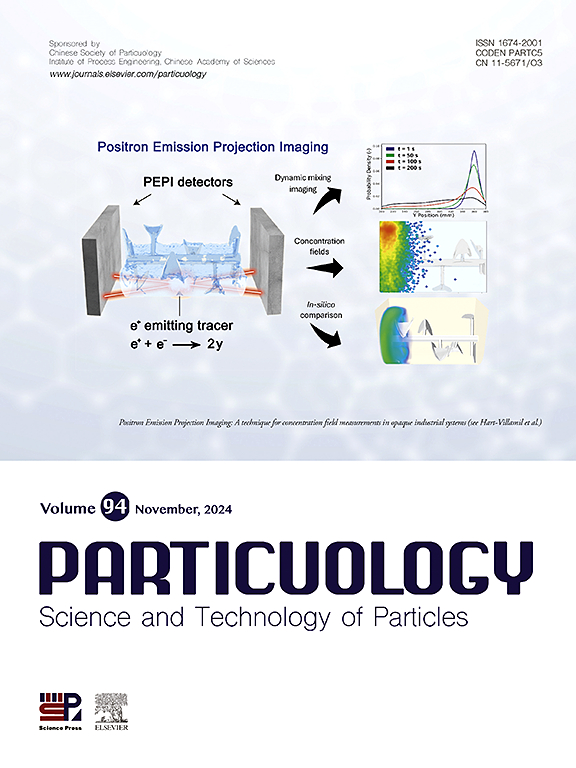基于机器学习算法的多轴土壤修复设备参数预测与验证
IF 4.1
2区 材料科学
Q2 ENGINEERING, CHEMICAL
引用次数: 0
摘要
为了促进污染土壤的循环利用,开发创新的多轴土壤修复机械对于实现土壤与修复化学品的均匀混合至关重要。利用正交试验的均值水平确定最陡爬坡试验的均值水平,然后根据最陡爬坡试验结果确定最优取值范围,并据此确定响应面试验的上下界区间。将机器学习算法应用于响应面数据,确定最优模型。结果表明,决策树模型在预测双指标的准确性和稳定性方面优于随机森林、SVR、KNN和XG Boost。对决策树模型的分析得出以下最佳参数设置:均质时间1.7 s,均质间隔181 mm,破碎机间隔156 mm,转速113 rpm。在最终的测试原型中,机器学习预测模型的错误率分别为3.01%和3.88%。实验数据证实,应用机器学习对参数进行优化后,预测精度达到了令人满意的水平。本研究将为新型原位多轴土壤修复装置的设计与优化提供参考。本文章由计算机程序翻译,如有差异,请以英文原文为准。

Prediction and validation of parameters of multi-axis soil remediation equipment based on machine learning algorithms
To facilitate the recycling of polluted soils, the development of innovative multi-axial soil remediation machinery is essential for achieving a uniform blend of soil with remediation chemicals. The mean level of the steepest climb test was set using the mean level derived from the orthogonal test, and then the range of optimum values was determined based on the results of the steepest climb test, and the upper and lower bound intervals of the response surface test were set accordingly. The most optimal model is identified by applying machine learning algorithms to the response surface data. The results show that the Decision Tree model outperforms Random Forest, SVR, KNN and XG Boost in terms of accuracy and stability in predicting dual indicators. Analysis of the decision tree model yields the following optimal parameter settings: homogenisation time of 1.7 s, homogenisation spacing of 181 mm, crusher spacing of 156 mm, and speed of 113 rpm. In the final test prototype, the error rates of the machine learning prediction models were 3.01% and 3.88% respectively. The experimental data confirms that the prediction accuracy reaches a satisfactory level after applying machine learning to optimise the parameters. This study will provide a reference for the design and optimisation of new in situ multi-axial soil remediation devices.
求助全文
通过发布文献求助,成功后即可免费获取论文全文。
去求助
来源期刊

Particuology
工程技术-材料科学:综合
CiteScore
6.70
自引率
2.90%
发文量
1730
审稿时长
32 days
期刊介绍:
The word ‘particuology’ was coined to parallel the discipline for the science and technology of particles.
Particuology is an interdisciplinary journal that publishes frontier research articles and critical reviews on the discovery, formulation and engineering of particulate materials, processes and systems. It especially welcomes contributions utilising advanced theoretical, modelling and measurement methods to enable the discovery and creation of new particulate materials, and the manufacturing of functional particulate-based products, such as sensors.
Papers are handled by Thematic Editors who oversee contributions from specific subject fields. These fields are classified into: Particle Synthesis and Modification; Particle Characterization and Measurement; Granular Systems and Bulk Solids Technology; Fluidization and Particle-Fluid Systems; Aerosols; and Applications of Particle Technology.
Key topics concerning the creation and processing of particulates include:
-Modelling and simulation of particle formation, collective behaviour of particles and systems for particle production over a broad spectrum of length scales
-Mining of experimental data for particle synthesis and surface properties to facilitate the creation of new materials and processes
-Particle design and preparation including controlled response and sensing functionalities in formation, delivery systems and biological systems, etc.
-Experimental and computational methods for visualization and analysis of particulate system.
These topics are broadly relevant to the production of materials, pharmaceuticals and food, and to the conversion of energy resources to fuels and protection of the environment.
 求助内容:
求助内容: 应助结果提醒方式:
应助结果提醒方式:


